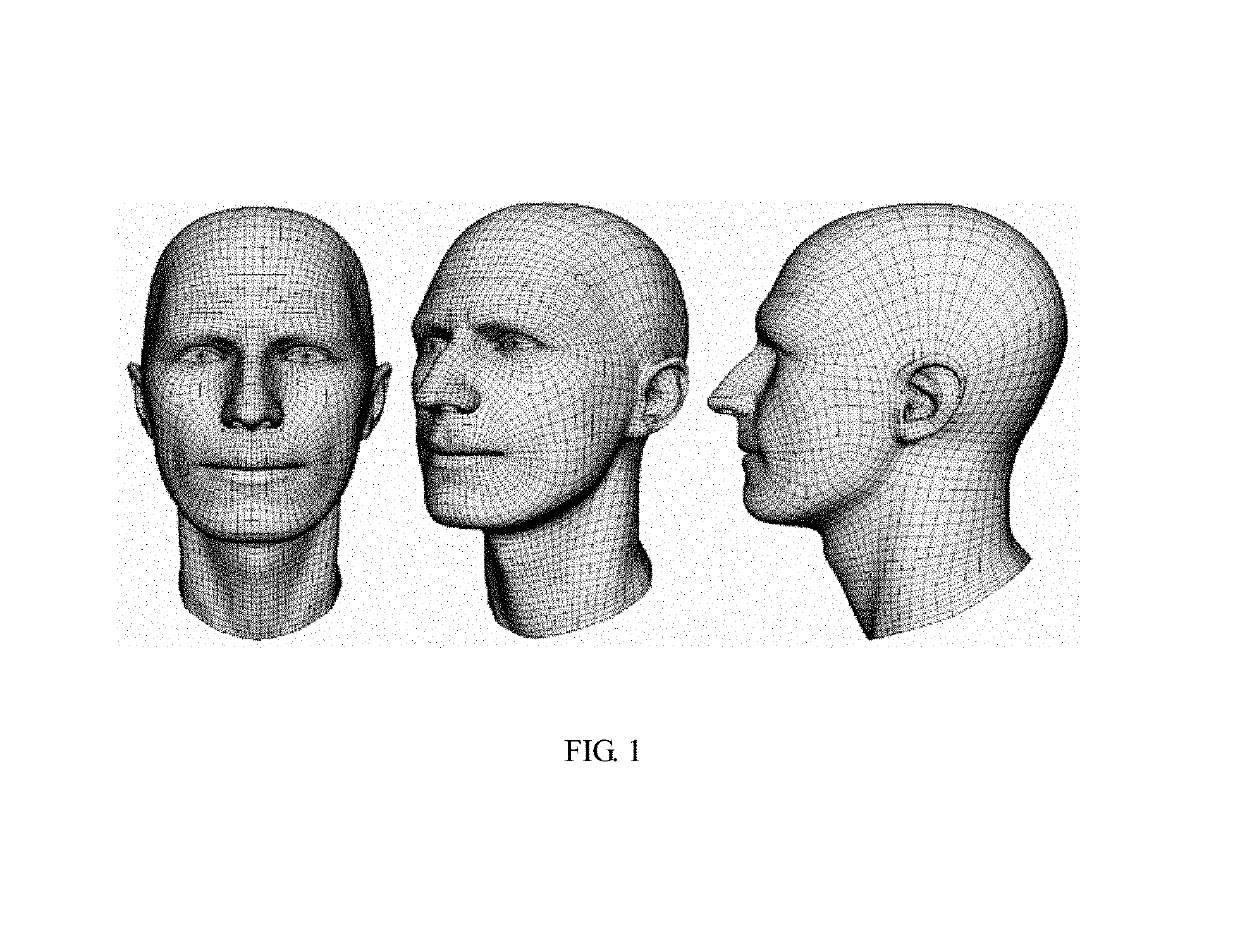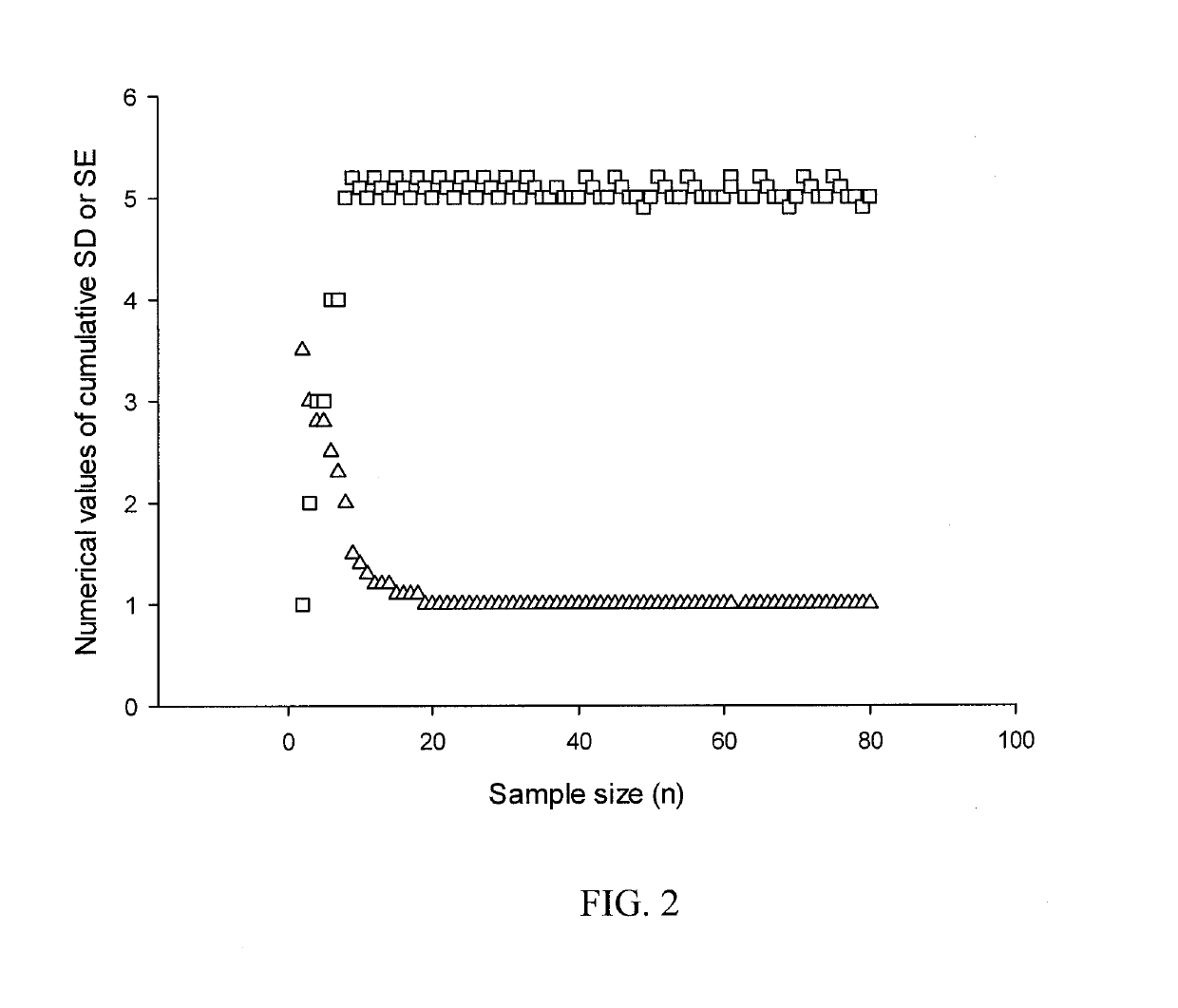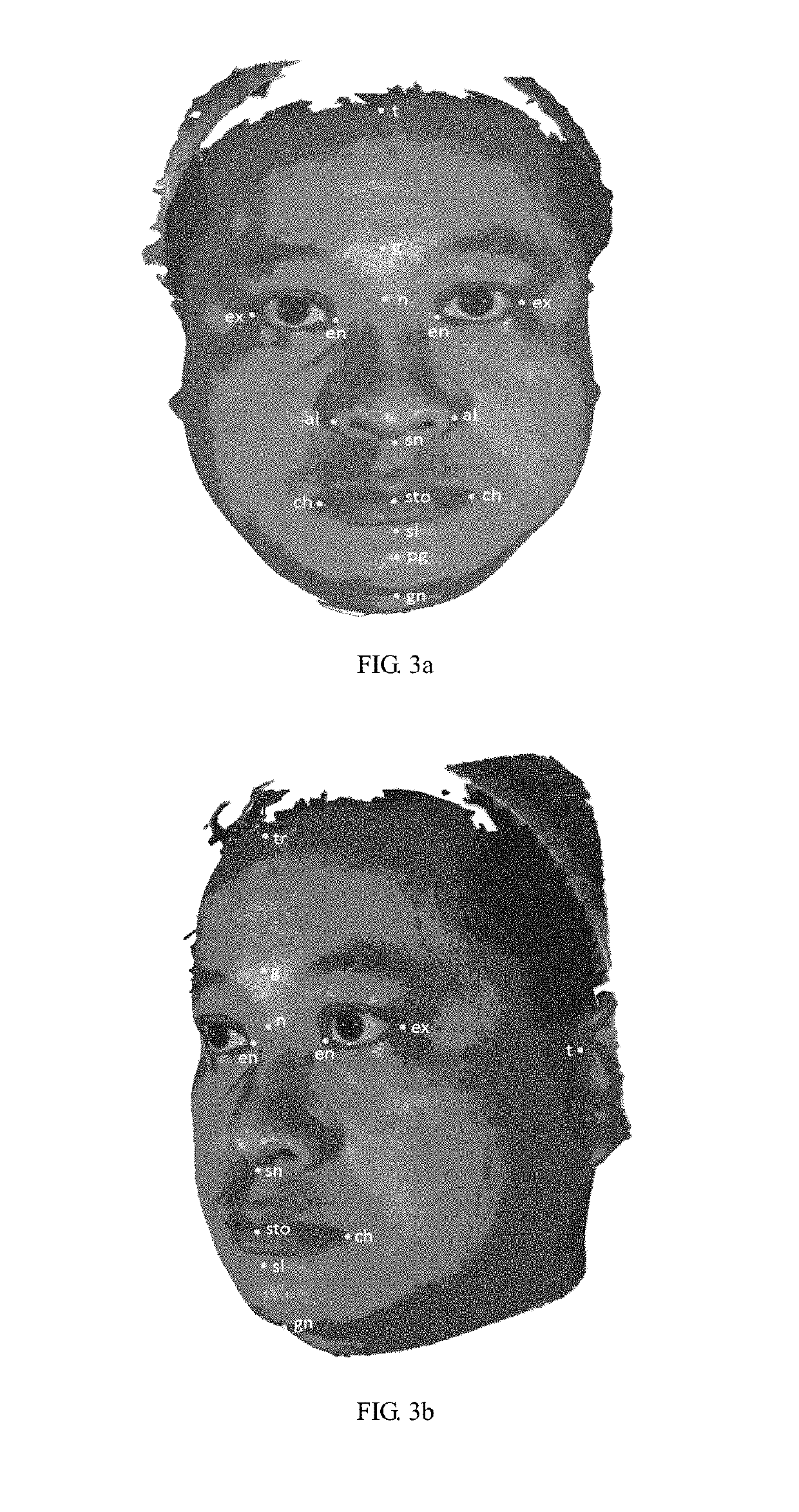Recognition of human faces based on population verified reproducible measurements between facial anthropological landmarks on 2 dimensional or 3 dimensional human photographs
a human face and reproducible measurement technology, applied in image analysis, image enhancement, instruments, etc., can solve problems such as large amount of data, and achieve the effect of reducing the use of plastic cards
- Summary
- Abstract
- Description
- Claims
- Application Information
AI Technical Summary
Benefits of technology
Problems solved by technology
Method used
Image
Examples
Embodiment Construction
[0023]Referring to FIG. 2, to FIG. 3a and to FIG. 3b of the drawings and in accordance with the principles of the invention, the present invention uses an established and robust statistical method to assess reproducibility of measurements between facial anthropological landmarks.
[0024]When studying any natural phenomena, the findings may either be reproducible or non-reproducible. Reproducible observations of a natural phenomenon carry with it small variations but the core phenomenon remains the same. Statistically, the core phenomenon is record as the mean value (x) after many observations (n) of that phenomenon. Statistically, the small variations are calculated as standard deviation (SD) from the mean value. Standard error (SE) may be further calculated from SD.
[0025]For every additional observation (n+1) of a specific natural phenomenon, there will be a new mean value (x+1), a new SD (SD+1) and a new SE (SE+1). For a non-reproducible phenomenon, cumulative new SD values will ind...
PUM
 Login to view more
Login to view more Abstract
Description
Claims
Application Information
 Login to view more
Login to view more - R&D Engineer
- R&D Manager
- IP Professional
- Industry Leading Data Capabilities
- Powerful AI technology
- Patent DNA Extraction
Browse by: Latest US Patents, China's latest patents, Technical Efficacy Thesaurus, Application Domain, Technology Topic.
© 2024 PatSnap. All rights reserved.Legal|Privacy policy|Modern Slavery Act Transparency Statement|Sitemap



